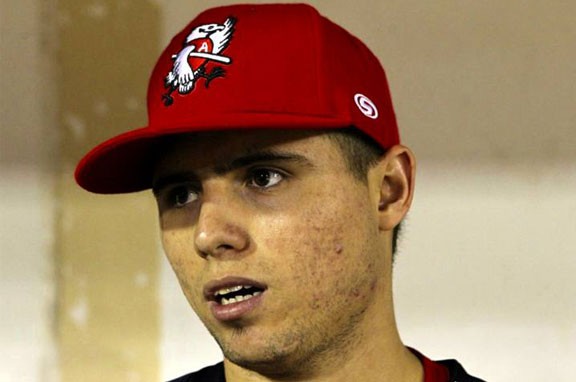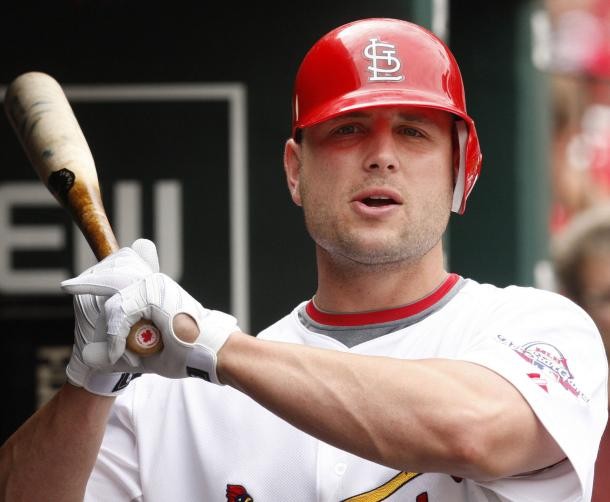Thanks to a playoff format that grants two wild-card entries in each league, the 2016 St. Louis Cardinals are clinging to life as contenders in the National League. Trailing the Chicago Cubs by nine games, the Cardinals stand little chance of winning a fourth straight NL Central championship. But through Sunday’s games, St. Louis is tied with the Mets atop “the fourth division,” the wild-card race.
Five recent Memphis Redbirds will have a lot to say about whether or not St. Louis reaches the postseason a sixth year in a row. Here’s a breakdown of what we’ve seen from this quintet . . . and what we might expect as summer heats up.
• Stephen Piscotty — Jason Heyward is a very good rightfielder. He won a Gold Glove and helped the Cardinals win 100 games last season before signing a fat free-agent contract with the Chicago Cubs. Judging by the standings today, Heyward is a wise man. But judging by the numbers Heyward has produced compared with those of Piscotty, the Cardinals have upgraded rightfield and at a little over two percent(!) of the salary Chicago is paying Heyward this year ($21.6 million). Through Sunday, Heyward is hitting .240, with 4 home runs and 22 RBIs for the North Siders. Piscotty’s figures: 308, 7, and 35. Piscotty has a cannon for an arm with range to match Heyward’s. The Stanford alum should be batting third (or fourth) in St. Louis for years to come.

Aledmys Diaz
• Aledmys Diaz — Shortstop has been a developmental blind spot for the Cardinals’ system. Brendan Ryan, Tyler Greene, and Pete Kozma made their way to St. Louis via Memphis, but found themselves overmatched by big-league pitching. Imports like David Eckstein and Jhonny Peralta have manned the position since Edgar Renteria departed after the 2004 season. But when Peralta was shelved by a thumb injury in spring training, the 25-year-old Diaz found himself on the big-league roster. (We caught but a glimpse of the Cuban import last year in Memphis, where he hit .380 in 14 games.) Through Sunday, Diaz has hit .315, drilled 8 homers, and driven in 32 runs. Even more impressive, he’s forced a shift of three-quarters of the Cardinals’ 2015 infield. Just off the disabled list, Peralta is now at third base, Matt Carpenter has moved from third to second, and Kolten Wong — hitting .222 in limited play — is back in Memphis, hoping to rediscover his swing. Diaz will be in the discussion for National League Rookie of the Year.
• Carlos Martinez — With comparisons to another famous Martinez — Pedro — this Dominican flame-thrower made the All-Star team (in 2015) before his 24th birthday. But after going 10-3 with a 2.52 ERA over the season’s first half, he ran out of gas, splitting eight decisions with a 3.73 ERA over the second half before being shut down for the postseason with shoulder fatigue. He’s been inconsistent this season, but leads the St. Louis rotation with seven wins and a 3.46 ERA. The Cardinals’ starting pitching has been the team’s most disappointing unit this season. If Martinez continues to grow toward ace status, other — weaker — areas of the rotation will be easier to address.
• Michael Wacha — It’s hardly reached a Rick Ankiel-level of alarm (yet), but the drop in effectiveness for the golden boy of the 2013 postseason should be a major concern for Cardinal general manager John Mozeliak. Like Martinez, Wacha was an All-Star in 2015 when he led the Cardinals with 17 wins and posted a 3.38 ERA in 181 innings. But after starting this season 2-0, Wacha has lost six straight decisions and recently gave up 21 earned runs over four starts. (He was sharp in a no-decision at Pittsburgh last Friday, allowing two earned runs in seven innings.) Wacha claims his arm feels fine. He turns 25 next month and is an extraordinary asset for the Cardinals as he won’t reach free agency until 2020. But Wacha simply has to find the groove that earned him MVP honors in the 2013 National League Championship Series. Otherwise, middle-relief awaits.
• Randal Grichuk — He’s scaled the centerfield wall to rob home runs from opponents. He’s delivered a walk-off home run (against the Cubs on May 23rd). He even wears number 15, magnifying comparisons with Jim Edmonds, a previous Cardinal centerfielder and a member of the franchise’s Hall of Fame. But the 24-year-old Grichuk remains a work in progress. After contributing a slash line of .276/.329/.548 in 2015, Grichuk has dropped to .210/.281/.400 this season. He had more strikeouts (110) than hits (89) a year ago, and the ratio hasn’t shifted (53 and 42 this year). Grichuk brings the proverbial “five tools” to the ballpark, but the sixth (and most important) “tool” — consistency — remains elusive.

